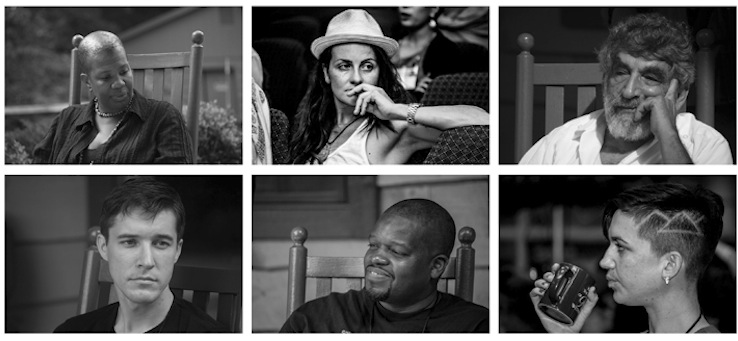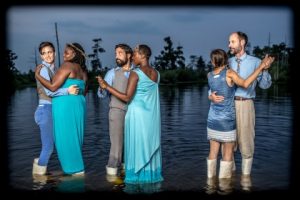This year’s Community/Artist Partnership Program (C/APP) projects share many connections. Each of the four projects merge art and activism, spring up out of local communities, and address the need for healing in the face of trauma and oppression. Last month we heard from two of these projects, SpiritHouse and Speed Killed My Cousin, and reflected on the ways that storytelling is key to healing ourselves, our communities, and our world. This month, we look to Cry You One and the Cucalorus Film Festival while considering storytelling’s counterpart: listening.
Just as storytelling is essential to healing on all levels – individual, collective, and systemic – so is listening. Last month Cheldyn Donovan, a Veteran Peer Leader and Speed Killed My Cousin collaborator, spoke about the role that listening played in his own recovery process. Through hearing other folks’ experiences of trauma he realized: “I didn’t need to say anything – it was being said for me. And that’s what gave me the courage to open up.” Now facilitating support groups through the VA, Cheldyn still relies on listening: “I don’t just tell my story, I listen and tell my story of recovery through their stories.” Please visit our blog to read Cheldyn’s powerful testimony, “Opening Doors: Reflections on Art and Recovery.”
Listening is integral to documentary filmmaking, and in the words of the Cucalorus Film Festival’s Director, Dan Brawley, their Works-In-Progress program “invades” this process, embedding dialogue and deep listening even further within it. At this November’s festival, eleven works-in-progress will be screened and discussed with communities who have lived experience with the film’s content. In “Radical Rewind: Cucalorus Invades the Process”, Dan explains that this program creates space where “affected communities … share power with the artists,” resulting in a “community-based model for editing and project development that places the potential for transformation deep inside of the process itself.”
Similarly, Mondo Bizarro and ArtSpot Productionshave engaged in deep listening to create Cry You One, a site-specific performance on the disappearing wetlands of southeastern Louisiana. Rebecca Mwase and Hannah Pepper-Cunningham describe how listening to both local communities and the land they live on impacted their process in “The River Runs Deep: Activism and the Art of Listening:” Before working on Cry You One, we never listened to the cicadas long enough to hear how their calls fluctuated with the murmurings of the frogs…We did not all grow up with a deep way of listening to, being with, or knowing land. Through the process of creating this performance, we have started, slowly, to experience this. And we have listened more deeply to the people whose work it is to know this land.
As a network of artists and cultural workers, we know the power of listening, and being listened to – how it can transform us, our work, and our communities. As activists committed to uprooting oppressions of all kinds, often our task is to listen between the lines. Not every story that needs to be told is fully audible. We pay attention to the under-spoken stories; we listen to the voices drowned out by dominating histories and systems. The artist and American Indian Movement organizer, Jimmie Durham, speaks to this kind of listening in his poem, “Columbus Day”:
In school I learned of heroic discoveries
Made by liars and crooks. The courage
Of millions of sweet and true people
not commemorated.
Let us then declare a holiday
For ourselves, and make a parade that begins
With Columbus’ victims and continues
Even to our grandchildren who will be named
In their honor.
Because isn’t it true that even the summer
Grass here in this land whispers those names,
And every creek has accepted the responsibility
Of singing those names? And nothing can stop
The wind from howling those names around
The corners of the school.
This poem and these C/APP projects remind us that we have much to learn from rewinding, from deeply listening, and doing so with our whole selves to all that surrounds us – past, present and future. Cultivating the ability to deeply listen is essential to our practice as artists, cultural workers and activists. And just as nothing can stop the wind from howling, deep listening inevitably leads us back to storytelling. If every creek has accepted the responsibility of singing those names, so must we.
As an artist, as a cultural organizer, whose names do you whisper? Whose names do you howl? What stories do you sing?
_______________________________________________

This post was written by Nicole Gurgel, Content Developer for Alternate ROOTS.


